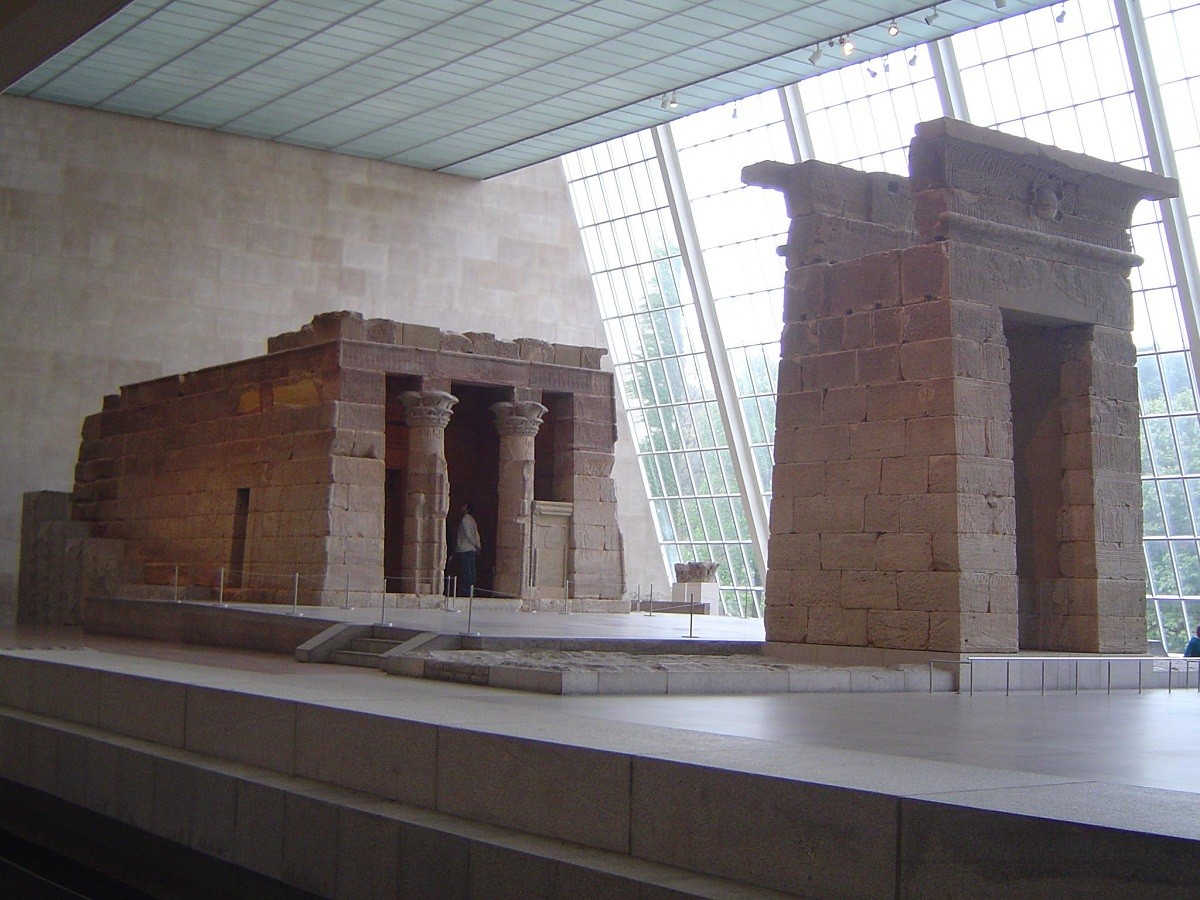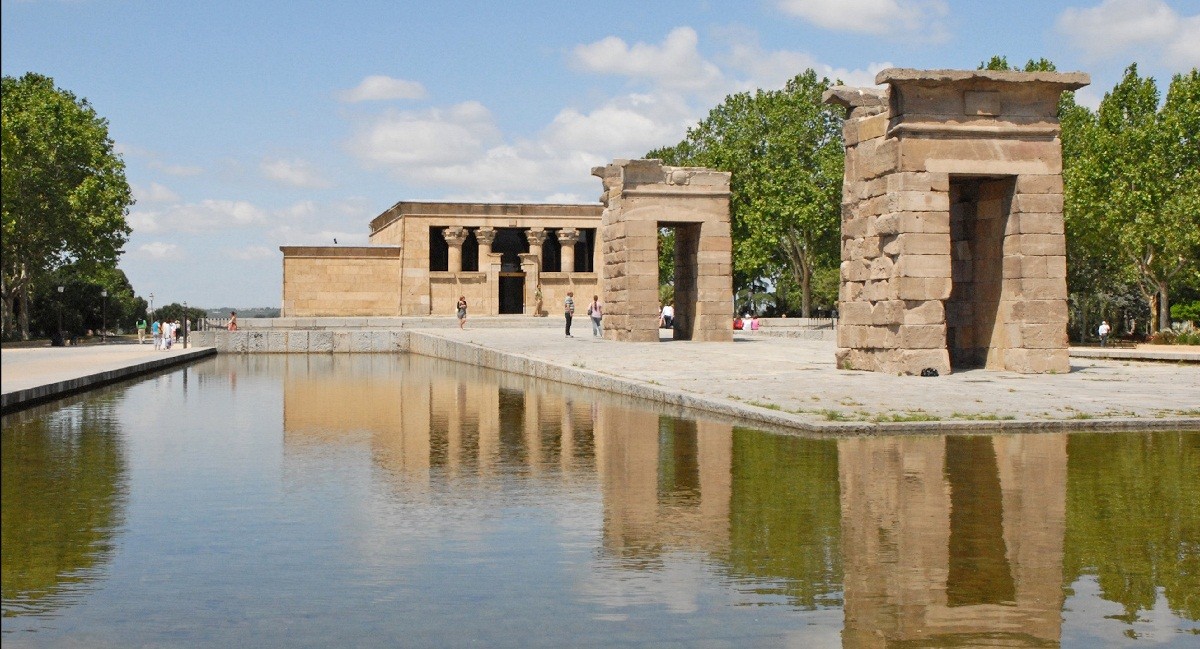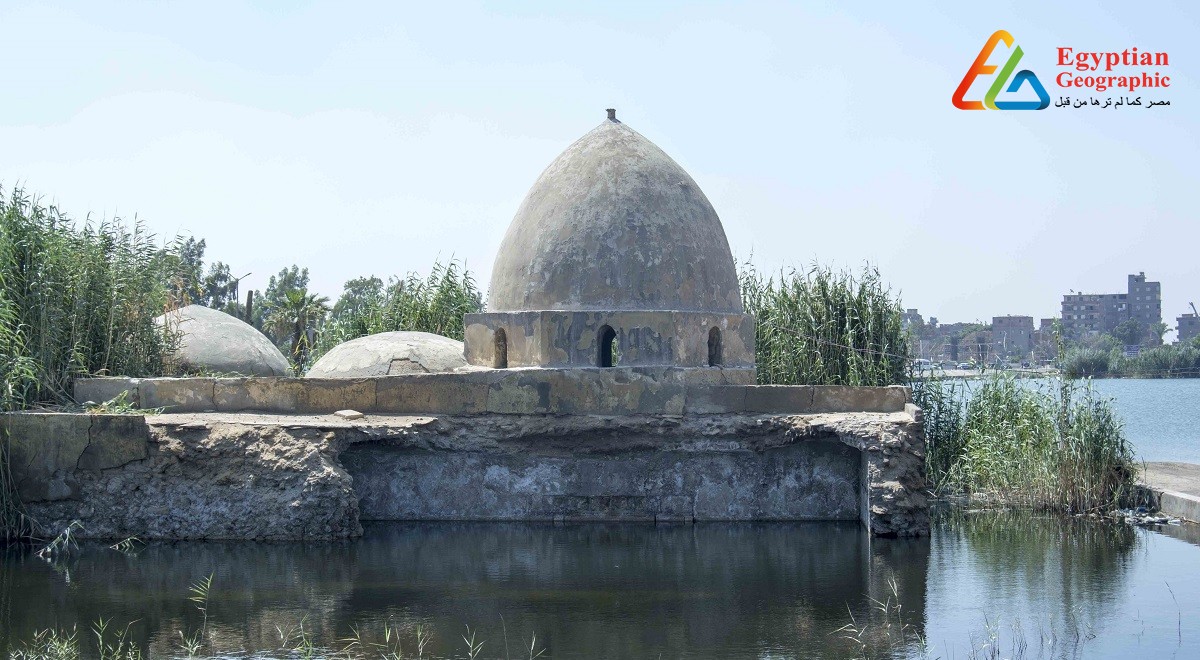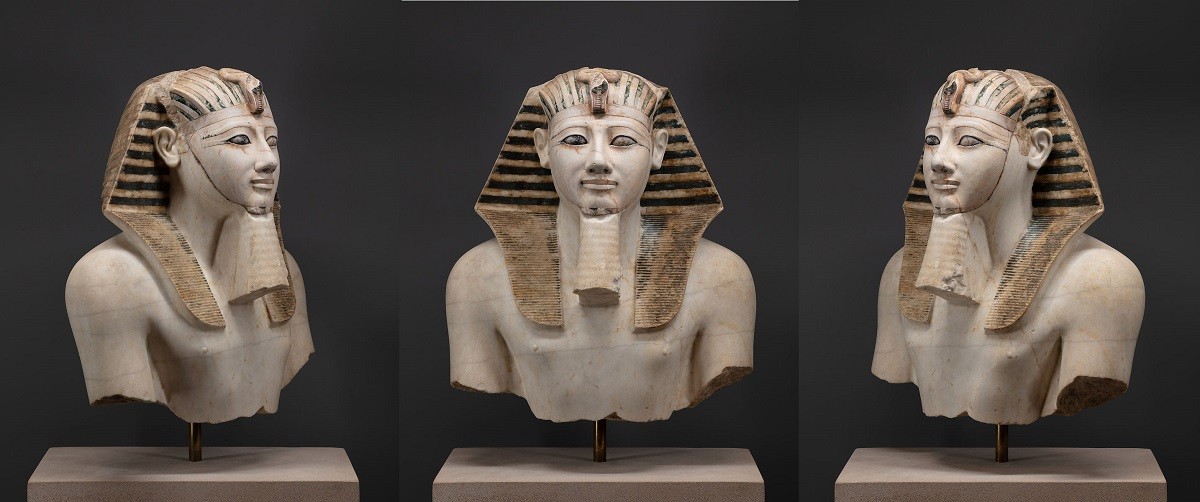From London to Berlin , Torino , New York and Toronto, 40 European and American cities, adorned with our ancient Egyptian monuments. Although there is no real official computation of the number of stolen Egyptian antiquities for more than a century and a half ago,those 40 museums have about 775,000 artifacts,some of them include more than 100,000 artifacts such as the British Museum, Berlin Museum and Petri museum of Egyptian antiquities in London.
Apart from the Egyptian antiquities that had smuggled under the British occupation of Egypt, and under laws of excavation which did not preserve the discovered monuments, a number of Egyptian leaders, kings and presidents gave some of these unique Egyptian antiquities as a kind of gratitude for those countries. The most important of these gifts include.
Temple of Dendur
The Temple of Dendur is an Ancient Egyptian temple that was built by the Roman governor of Egypt, Petronius as one of many Egyptian temples commissioned by the emperor Augustus. It was built near the western shore, 78 kilometres south of Aswan, in front of the village of "Dendur" in Aswan .It was gifted to Isis and Osiris,and also to two ordinary people considered champions of war.

The temple is constructed from sandstone and measures 25 meters from the front stone gate to its rear as well as 8 meters from its lowest to its highest point. A 30-meter-structure room overlooks the Nile.From the gate, two walls surround the temple and isolate the structure room and the Nile water. The temple is partly decorated with reliefs, the temple base is decorated with carvings of papyrus and lotus plants which stand for God Hapi. The top of the temple gate is decorated with the pterodactyl, which symbolizes God Horus. On the outer walls, emperor Augustus is depicted as a pharaoh giving gifts to the gods ISIS, Osiris and their son Horus. A similar depiction is found in the first room of the temple where Augustus prays and presents gifts to the gods. The inscriptions on the third room's door shows Pihor and Pedesi as young gods worshiping Isis and Osiris .

Behind the temple of Dendur there is a structure that had been carved in rocks ,before the temple was built, it is believed to belong to the 26th family. Once Christianity had spread, the central part of the temple became a church whose monuments had been removed, except for certain coptic inscriptions. There are some texts on the walls, written in coptic, about turning this temple into a church,those texts seem to be registered around 577 A.D. and it's thought that it was registered by the Nubian king Axia Nomi.
The temple was removed from its original location in order to save significant sites from being submerged by Lake Nasser, following construction of Aswan High Dam.In recognition of the American assistance in saving various other monuments threatened by the dam's construction, Egypt presented the temple and its gate as a gift to the United States of America, So President Abdul Nasser ordered a ministerial decision no. 4647 , in December,1966.
The stone blocks of the temple weighed more than 800 tons in total with the largest pieces weighing more than 6.5 tons.They were loaded in 661 crates and transported to the United States by the freighter m/v Concordia Star.On April 27, 1967, the temple was awarded to The Metropolitan Museum and a new wing was constructed to be occupied by the temple of Dendur, which was reconstructed in its old form.
Temple of Depod
The temple was originally built 15 km south of Aswan, near the first Nile waterfall in the daboud area on the west bank of lake nasser. The temple was built for the goddess ISIS on Philae island. Adikhalamani , the Kushite king of Meroë, started its construction by building a small single-room chapel dedicated to the god Amun. It was built and decorated in a similar design to the later Meroitic chapel on which the Temple of Dakka is based. During the reigns of Ptolemy VI, Ptolemy VIII, and Ptolemy XII of the Ptolemaic dynasty, it was extended on all four sides to become a small temple of 12 by 15 metres , which was dedicated to Isis on Philae island , the Roman emperors Augustus and Tiberius completed its decorations. From the platform, there is a long processional way leading to an open courtyard and then two lounges, passing through three stone gates, and finally to the temple itself. The nave had four columns , but they were collapsed in 1868. Behind it lays the original sanctuary of Amun.

In 1960, during the construction of the High Dam in Aswan, UNESCO in cooperation with the Egyptian government, launched an international appeal to protect this mythical legacy from loss and destruction. As a sign of gratitude for the help provided by Spain in protecting Abu Simbel temple, the Egyptian government donated the temple of Debod to Spain in 1968.

In 1972, the temple of depod was rebuilt in " The Parque del Oeste" park near the royal palace in the Spanish capital, Madrid. The temple was opened to the public at the end of the year. The temple gates were rearranged in a different order, as the gate topped by the winged serpent was not the closest to the temple. The temple is one of the ancient Egyptian architectural works that can be seen abroad and the only one of its kind in Spain.






























































Egyptian Site & magazine